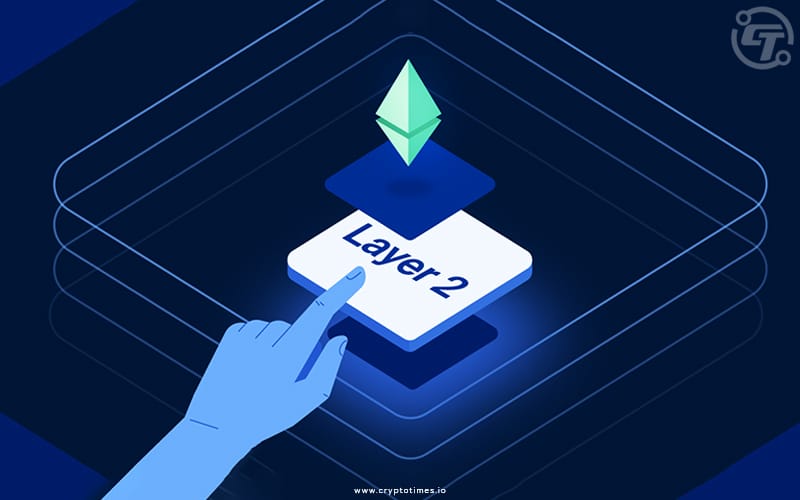If you would have tried to use the Ethereum network last year, you would have certainly noticed that the fees are very high. This is most probably due to the current limitations of the protocol in terms of scalability.
If the network’s number of transactions per second (TPS) is limited, transactions with higher values will have precedence in the miners’ decision to execute them first.
When using a traditional Ethereum wallet, the application will automatically calculate the recommended fee so that the transaction can be performed without getting stuck in a long queue.
As the number of dApps and users accessing the Ethereum network grows, the volume of transactions on the network is projected to grow as well. At the moment, Ethereum processes approximately 1 million transactions per day, which is three times greater than the Bitcoin network.
So, the question that remains is: when will Ethereum be scalable? The answer is encouraging, probably between 2022 and 2023.
Let’s understand in this article the major scalability solutions for Ethereum underway, with actual predictions of the completion.
Ethereum Rollups
Rollups are layer 2 solutions, that is, executions that do not change the architecture of the main chain. Rollups mostly are of two types: Optimistic rollups and ZK-rollups. However, they both have one thing in common: they both reduce the quantity of data transmitted to layer 1.
Consider the amount of information that is constantly stored in Ethereum’s layer 1. Rollups allow a significantly reduced amount of information to be stored. The basic strategy is to perform off-chain computation, compress the data, and transmit to layer 1.
Compression techniques are applied to the following transaction parameters: Nonce, Gas Prices, Gas, Value, and Signature. In total, there is nearly a 10x reduction in transaction size. A common transaction in Ethereum takes up about 110 bytes. Using rollup, compression of the information reduces this amount to about 12 bytes.
But the question that remains is: How do you ensure that the compressed data you sent is correct, without fraud? This is where Optimistic rollups and ZK-rollups differ.
In Zk-rollups, there is a cryptographic proof called ZK-SNARK responsible for ensuring that the post-state root of the Merkle tree is correct.
On the other hand in Optimistic rollups, transactions are assumed to be valid by default, via a fraud proof security model. This increases speed, as transactions are now rolled up into batches and submitted to Ethereum in a single transaction.
However, if a fraud is suspected, it can be challenged and fraud proof will run the transaction to see if fraud took place.
These features make optimistic rollups faster and easier to implement technologically, but they have a long withdrawal period (1 week), which is the time to evaluate and verify the authenticity of the batch.
Vitalik says he believes that, in the short term, optimistic rollups will be more prominent, especially for more computationally intensive operations, but that in the long term Zk-rollups should win out, especially after the improvement of ZK-SNARKs technology.
What is the expected scalability for Ethereum with Rollups?
Estimates are somewhere between 1000-4000 TPS. Then, with the implementation of sharding, Ethereum could reach 100,000 TPS or more.
Some examples of rollups projects under construction at Ethereum:
- Optimistic rollups: arbitrum and Boba Network.
- ZK-rollups: zkSync, Immutable X, Hermez and Aztec.
The Sharding Solution
Along with rollups, one of the most expected scalability solutions is sharding, which basically allows 64 chains to work in parallel instead of having just one. The sharding solution acts on layer 1 (also called on-chain scalability), structurally changing the way Ethereum organizes blocks.
Sharding is expected to be implemented in 2023, after rollups are launched and tested, which will occur throughout 2022.
Other Solutions
One of the most common solutions for scalability in Ethereum, which is already widely used, are sidechains, such as Polygon and Gnosis. Sidechains are very versatile and EVM-compatible, but have the disadvantages of being less decentralized and having an independent consensus protocol.
Another independent approach is Validium, which uses the proof concept in a similar way to ZK-rollups, but without storing data in layer 1. Examples of projects working with this technique are Starkware and Loopring.
Conclusion
Ethereum is still in the early stages of development, with a focus on scalability. The year 2022 should be remembered for the introduction of rollups, which will lower the costs of many common applications such as swaps in DEXs, as well as the entrance of new applications that were previously impossible due to data volume, such as more complicated games.
After the rollups mature, all eyes will turn to sharding, with the expectation that Ethereum will become a decentralized system that competes directly with large centralized systems like Visa.
Although there are almost always unforeseen issues and development delays, it is possible that these deliveries will actually happen in 2022 and 2023 as planned, because many changes have already been made and the concept is already quite mature.
Obviously, this will not be the end. The full introduction of sharding with rollups will be the beginning of a new journey of learning and modifications.
Read More Ethereum News






